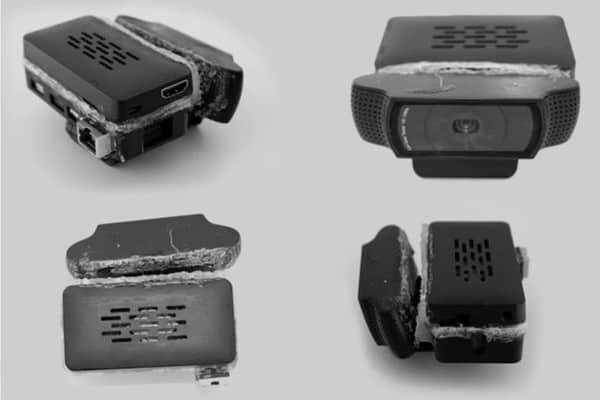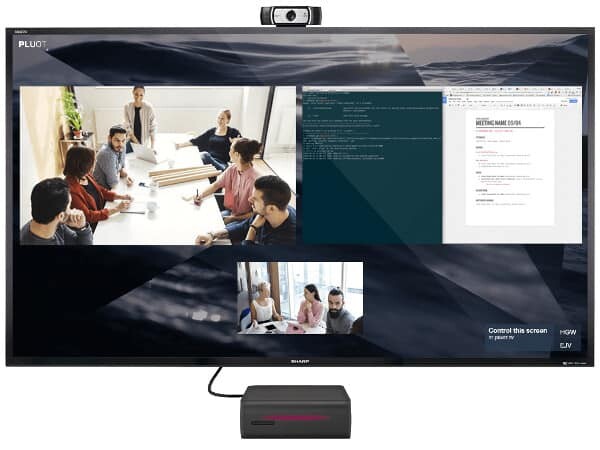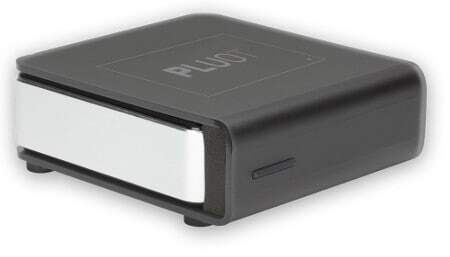I get a feeling that the room system is actually about to change. And that’s probably a good thing.
For many years, video conferencing was defined by the “codec”. The “codec” in this case wasn’t H.264 or any other specification of a video compression standard. It was the term given to the grey box sitting inside a meeting room connected to a camera. For me, a better term for it was always the “room system”. The first ones started as designed, proprietary hardware, running proprietary embedded operating systems. They were connected to a specific camera that was either a part of the box or connected to the box externally – but in most cases was again a proprietary camera.
There have been attempts in the past to replace the room system with something less expensive. I even remember GIPS (remember them? Google acquired them 6 years ago and made WebRTC out of them) writing a post on their blog on how to build your own video conferencing system from an Intel machine and a Logitech webcam. It was nice, but it really didn’t change the industry.
Little has changed in the video conferencing room system. When I stopped following that industry closely, which was a few years ago, things were still in the same trajectory:
- Use proprietary hardware (the industry leaned towards the TI DSP at the time)
- Use Embedded Linux as the OS (at the time, this was actually a refreshing sidestep from VxWorks)
- Use an external proprietary camera (sourced from Sony if you wanted expensive highend or from another vendor if you wanted expensive “lowend”)
Software was taking the same design concepts of embedded platforms and closed systems at the time. You wrote ugly proprietary code from scratch with specialized UI frameworks. No fun at all.
When I decided to write my first posts about WebRTC, I wanted to share my views o f what WebRTC will do to the video conferencing room system. I noted three changes we will see:
So how will we handle it now?
- Commodity hardware, probably still with proprietary cameras
- Android operating system
- WebRTC multimedia and a web browser for signaling and everything else
I wrote it more than 4 years ago. And it still hasn’t happened. What I did fail to see, was how two additional changes are going to affect this industry:
- Migration towards cloud based deployments, services and business models (specifically in the video conferencing industry)
- Open hardware. Or at the very least, the constant grind of Moore’s Law and the stupidly capable hardware we have today
Hardware is cool again. IoT (the Internet of Things) made sure of that. Everything from wristbands, to drones, to self driving cars. Somehow, hardware startups had to also look at the video conferencing system.
Highfive was an early indication of that. A company conceived in 2012, just about the time I’ve written my own thoughts on the video conferencing room system. To some extent, also Double Robotics, who made use of an iPad and a Segway-like device. Both employed cloud for their distribution, selling a service around their devices. They were pioneers in selling their own video “codec” (=room system) coupled with a service they host and manage.
In the past month, things seem to be progressing in this same trajectory. Three items on the news recently caught my attention:
#1 – HELLO
HELLO is a video conferencing room system created by Solaborate. Solaborate is a social business/collaboration platform that has been around for several years now. Their CEO, Labinot Bytyqi was interviewed here a few years ago about Solaborate. I am not sure how they are fairing since then, but they must have been busy.
It seems that they are now adding a hardware component to the Solaborate platform in the form of HELLO. And what better place to go about doing that than a Kickstarter campaign?
https://www.kickstarter.com/projects/1658540583/hello-the-most-advanced-video-communication-device
HELLO Kickstarter
The thing I liked most is the image they shared of their first prototype:

For the uninitiated, that’s the Logitech C920 webcam, cut from its plastic contraption and glued together to something that looks like one of them Linux or Android-in-a-stick devices. Probably what holds the quad core ARM processor. Commodity hardware at its best.
Solaborate took a low goal for their Kickstarter campaign, passing it and then some. They will probably end up below the million dollar mark, but with a rather solid number of backers considering this is at the end of the day an enterprise product.
Oh – and did I mention they use WebRTC?
#2 – Pluot
Pluot is a new startup I came across over TechCrunch when they reported that Pluot raised $2.5 million.
The idea isn’t any different than the previous set of vendors. You get a small box and a camera, connected to the Pluot service.

From a hardware standpoint, it isn’t much different than the HELLO box. The camera from the picture is a Logitech C920 one.
The box, if you ask me, is too similar to an Intel NUC.

And it is actually running an Intel off-the-shelf commodity hardware:
The Pluot device is an Intel NUC running Ubuntu Core. […]
All the WebRTC media streams are peer-to-peer. […] That’s why we’re using an Intel Core i3 instead of a cheaper ARM option.
And yes. It is using WebRTC. And guess what? As with Skype, Pluot is also based on Electron (and Chromium as an extension of it):
So we scratched our own itch and built a little appliance, using WebRTC and atom-shell (which is now electron).
Pluot took a different business model approach – one used extensively by mobile operators: the box is free and you pay for the monthly subscription service only.
Commodity hardware, commodity software, commodity video conferencing core inside a Chromium shell, powering the whole video conferencing service.
#3 – Cisco trimming its workforce
In seemingly unrelated news, Cisco is trimming down its workforce. Everywhere in the news that this is mentioned, it also comes with an indication that the cuts are mainly on the hardware side of the house. There’s a need to focus more on software these days.
As one of the biggest players in video conferencing room systems, I wonder what that means. Is it a move towards leaner, more software focused room systems? Is the room systems in Cisco considered hardware or software in essence? Will we see a shift in business models?
–
The room system is slowly starting to change and take a new shape.
This change isn’t just a technical one in the specification of the hardware and software, but goes a lot deeper than that. These changes come with a change of how the room system is built, which parts are developed and which are “sourced” from open source alternatives (or paid third parties), who offers the service and how the business model look like.

Great article! At VideoConferenceGear.com we believe 100% in the software based room system. Traditional VC hardware is on its way to extinction faster than the hardware manufactures realize. Software based solution have allowed organizations that didn’t want to spend the money on proprietary hardware cost effective video collaboration.
That being said the potential for WebRTC in the conference room is great. BUT, it cannot be a silo by itself. It has to be so much more than just a video link within a browser. In order to gain user adoption within an organization it needs to address many different needs of an organization and integrate tightly into numerous other apps via API.
Personally I see WebRTC start as an add-on to existing solutions, not the end all be all. Eventually the reliability and stability of WebRTC will be increased. One of the big issues I have seen is Google making changes to their browser companies like Acano & Pexip need to release patches.
To grow WebRTC in conference rooms there needs to be applications that have it run as a room system vs a traditional desktop browser. Wireless keyboards and mice are OK in a conference room, but to gain true user adoption further integration is needed. Pexip and Logitech have a great example of how to easily start meetings in a: https://www.youtube.com/watch?v=l3VfRg22QmI
Re: Huddle Room systems with their own cloud service. I personally feel they are DOA. Organizations need more than a silo’d cloud service. It makes no sense to have a huddle room cloud solution that cannot call into a board room. Plus there are many sizes of conference rooms and a single camera offering from a manufacturer with only their cloud service will die very fast.
Adaptable and flexible are the keys to successful room systems.
Ryan Pinke – VideoConferenceGear.com